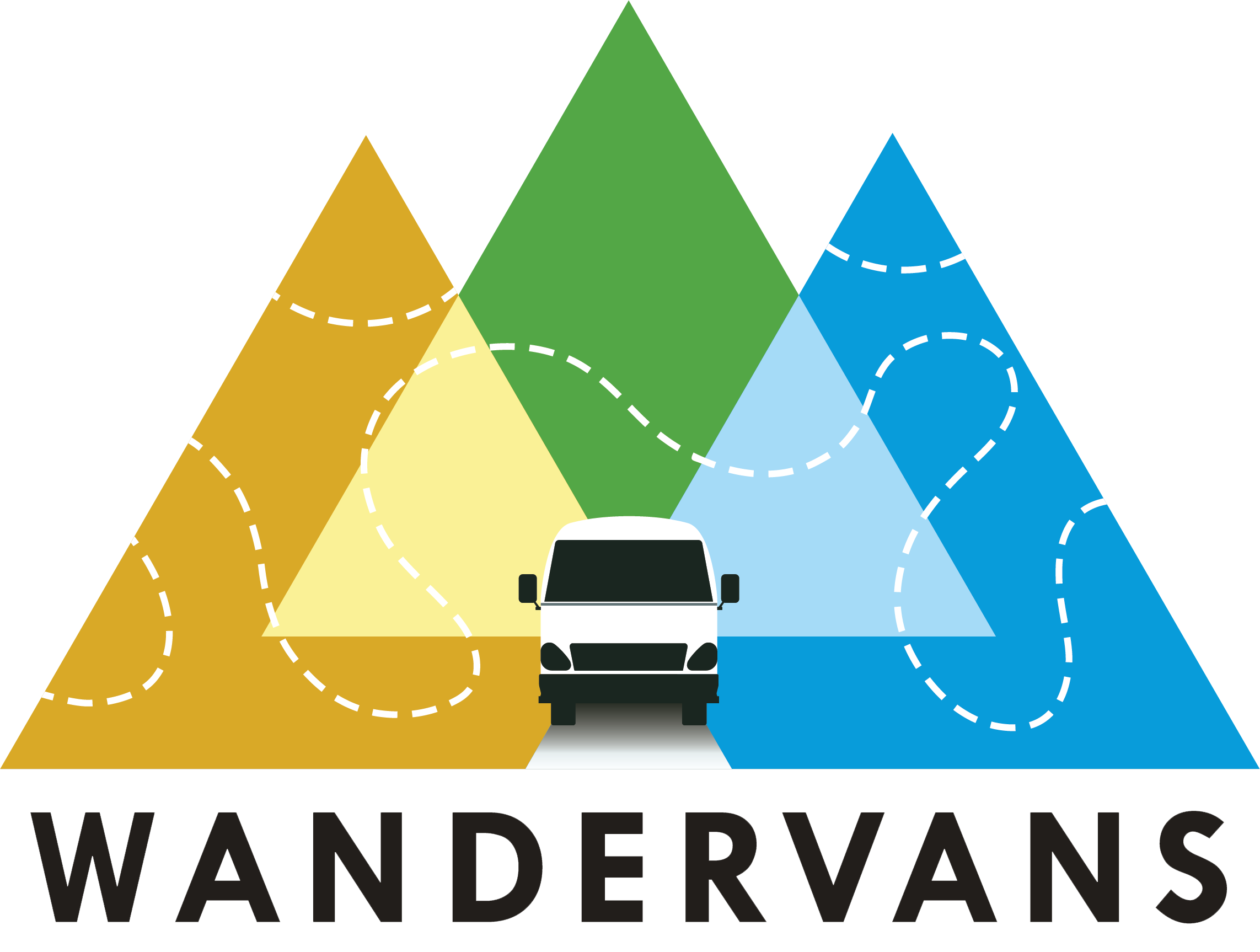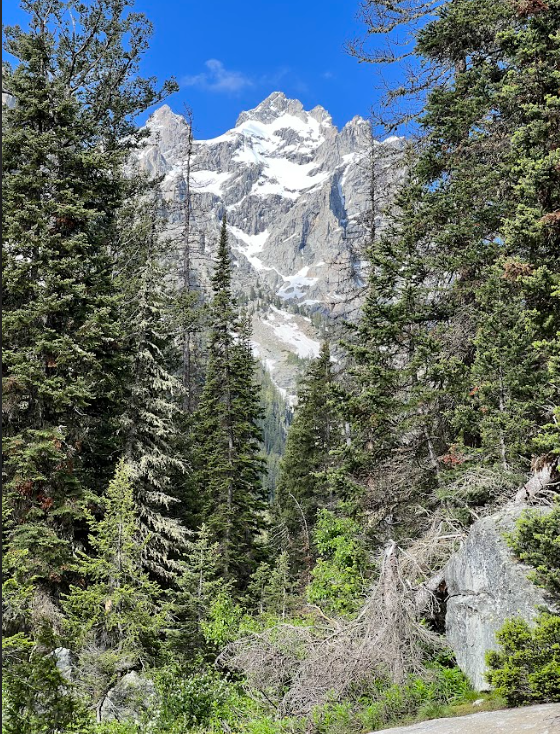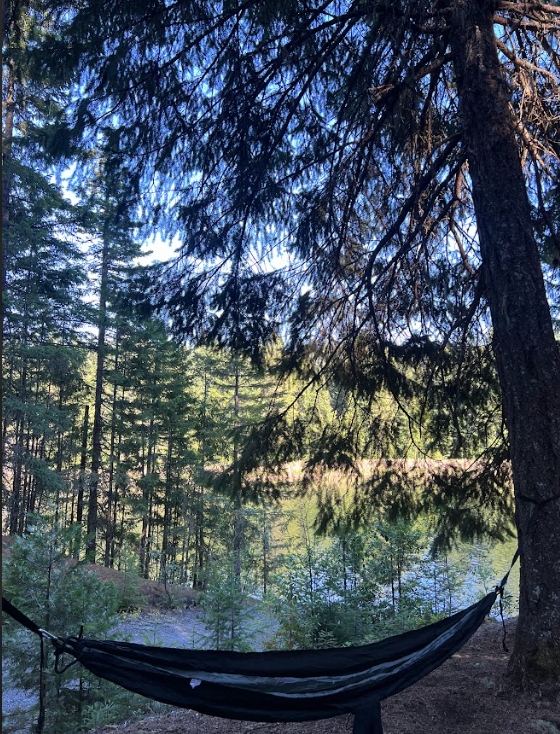How to Camp for FREE on a National Parks road trip in the US
Guest Author: Holly Henry
You’re planning your camping trip at the last minute, you have some spare time, and you want to get outdoors. But all the campsites in Yosemite, or Zion, or Yellowstone are fully booked. This is extremely common for the summer months and you’re not the only person to be looking for some tips and tricks. So how can you find free camping across the US?
When my friend first told me you could camp for free, with no campsite reservations, I didn’t quite believe her. Not that I don’t trust my friend - she spends every weekend outdoors, has climbed some of the most incredible routes in Yosemite, and once suggested we climb Half Dome in a 24 hour round trip from San Francisco. She’s the reason I’ve explored some of NorCal’s best hidden gems. But free camping?! Up until then I’d only heard of people reserving their summer adventures as early as 6 months before! So you can understand why I’d have at least some questions, as I imagine you do, too.
I want to share everything with you which I learnt on my awesome 3 week road trip with Wandervans. Out of the entire 3 weeks, I only paid for places to stay for 3 nights (and still managed to shower every 2-3 days). If you’re wondering how to camp for free, legally, close to National Parks, this should be a helpful guide.
How can I camp for FREE?!
Free camping is available all across the United States. It is known as Dispersed Camping - or boondocking, primitive camping, and wild camping - and it is legal on National Forest Land and BLM (Bureau of Land Management) Land. It involves camping for a short period of time in a remote area, with no amenities, outside of designated campgrounds. It is completely legal and most National Parks have a National Forest or area of BLM land very closeby.
There are some considerations to be aware of when Dispersed Camping. For instance, there are restrictions to the number of nights you can stay for. The USFS (US Forest Service) limit Dispersed Camping within National Forests to a 16 day period within 30 days. After 16 days you must move at least 5 miles away to another area. BLM land has a similar limit: Dispersed Camping is not to exceed 14 days within a 28 consecutive day period. Typically, Dispersed Camping is not permitted in the vicinity of developed areas or local neighborhoods.
What to expect when Dispersed camping?
The first thing to be aware of is that Dispersed Camping is mainly available in remote locations, with no amenities or facilities available onsite. This means that you should be appropriately prepared and know what to expect before arriving to the camp spot. Here are some of the main things to consider:
Road Conditions: Roads can be anything from a paved road, to a dirt track, to so bumpy that you’ll need an off-road, high clearance vehicle. Don’t attempt to drive if you’re not sure your vehicle will make it. The best advice is to always get out and walk down the road a little way, and if you’re still unsure, head to a back up spot.
Phone Service: Cellular service can be very unreliable and so don’t rely on it when Dispersed camping. Download offline maps, save any information you may need offline, and inform your loved ones you might be unreachable for a couple of days.
Trash Facilities: Keep a Pack in / Pack out camp and follow the leave no trace principles. Lets keep these areas free and clean for everyone to enjoy!
Water/Food/Fuel: Ensure that you are stocked with plenty of water for the entire duration of your stay. A 5 gallon back up tank is aways a good idea if you have a vehicle. The same goes for food supplies and gas. Don’t be caught out running low!
Safety: If you’re in bear country, be BearAware. Consider carrying bear spray and always store your food appropriately. And remember the saying: “A fed bear is a dead bear”.
Bathrooms: Be prepared to use the bathroom outdoors: You’ll need to bring a trowel to dig a hole and bury your poop! Remember to keep camp spots clean for others to use.
Dump Stations: If you’re on a long trip and you have graywater (used water/liquids), Dispersed camp spots do not have dump stations. However, most national park campsites will allow you to use their dump stations for a small donation or fee. Make sure to plan when you’ll be passing one.
How to find Dispersed camping locations
It can be quite overwhelming knowing where to start. Luckily there are lots of helpful resources which you can use to get started. The USFS and BLM websites both have guidelines for Dispersed Camping, which include tips such as:
Camp on bare soil if possible, to avoid damage or killing plants and grass.
Do NOT camp within 100 feet of any water source, plants near water are especially fragile.
Do not camp in the middle of a clearing or meadow; try to make your campsite less visible so that other visitors will see a "wild" setting
Do not try to level or dig trenches in the ground at your campsite. Pick a tent site that is already level with good drainage.
Use existing firerings and always follow local fire safety advice.
USDA Forest Service
You can also speak to a local forest ranger who may point you in the right direction. Some National Forests include ‘free campsites’. These were incredible locations which had some of the benefits of a paid campsite, but were free like a Dispersed camp spot. Some had picnic tables, toilets and other facilities. Similarly, word of mouth is a great tool - talk to other campers! They might have some amazing suggestions.
Paper maps and guidebooks can also come in handy. I picked up a guidebook from my local library before my trip and it was invaluable. Especially when you don’t have phone service and you want to do some research! I also picked up maps from National Parks and National Forest visitor centers.
However, without a doubt, the best way to find Dispersed Camp spots was with the free app, iOverlander. The app uses offline maps to pinpoint areas where other users have found a great Dispersed Camp spot. People can leave their own comments so you can read about the site, how to access it, and whether or not it is suitable for you. If you want to read more about the exact locations I was able to find using iOverlander, check out my full 3 week road trip itinerary! There are plenty of other apps which do the same, so you could choose the best one which works for you.
What to pack for Dispersed Camping
The Wandervan is perfectly equipped for an adventurous free camping trip. With a power bank, window coverings, and comfortable mattress with bedding, I slept like a baby for 3 weeks! Other options such as a burner stove, fridge, portapotty, and portable shower, added even more luxury to life in the mountains and forests!
Additionally, some of the most important items to pack for a car camping or van camping trip are:
Kitchen equipment: burner stove, pot, mug, utensils, cutting board and knife, dish soap and towel, trash bags.
Sleeping items: This depends on your method of camping. You may want a sleeping bag/duvet, pillow, camping mat or tent (if you’re not using a van).
Safety measures: Bear spray, weapon, Personal alarm, first aid kit, headtorch.
Camping comforts: Hammock, table, camp chair, bug repellent, binoculars.
Final thoughts on Dispersed Camping
Hopefully this was a useful introduction to free Dispersed Camping. Remember to always be prepared, do some research before your trip, and have an amazing adventure. If you’re interested in seeing some of the amazing places I was able to camp in for free with a Wandervan for 3 weeks, check out the Wandervans instagram page. Get in touch to tell us about your adventures!



